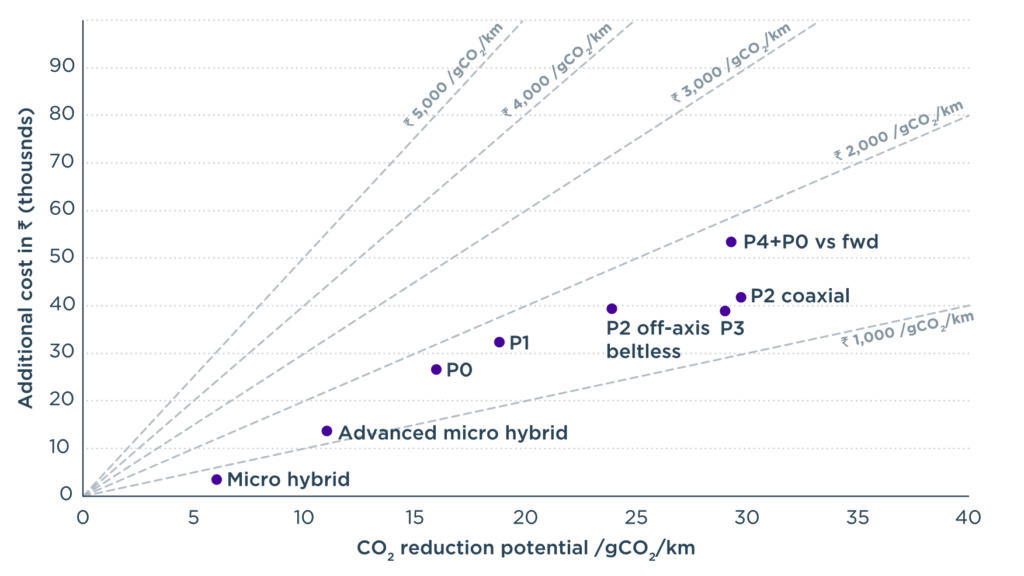Mild-hybrid vehicles: A near term technology trend for CO2 emissions reduction
White paper
The potential of 48V hybrids in India’s light-duty vehicle market
There is increasing interest in hybrid vehicles globally and India is no exception. With passenger car CO2 standards expected to become more stringent in the coming years, manufacturers are likely to turn to 48V hybrids for the Indian market, as is already happening in Europe. To help understand the future cost and CO2 reduction potential of hybrids in India, this paper uses data from our recent European market analysis and considers a variety of 48V hybrid architectures.
As illustrated in figure below, most architectures have a direct manufacturing cost (DMC) cost of about ₹2,000/gCO2/km in 2025. However, P2 coaxial and P3 systems are estimated to cost less, about ₹1,500/gCO2/km, and these can do more than most others to reduce the fleet average CO2 emissions. For regulators, this is evidence that more cost-effective solutions are available than the P0 systems typically being used on first-generation 48V hybrid systems, and indeed, the market share of P2 and P3 systems is expected to increase as sales volumes rise and cover the cost of redesigning the power train. Results also show that systems offer the best cost-to-benefit ratio with lower electric motor power, generally from 4 kW to 16 kW. Beyond the reduced emissions, a 48V hybrid system will also help manufacturers meet the ever-increasing electrical demands from new equipment such as electric compressors, catalytic converter heating, and active chassis systems.

Figure. DMC cost of 48V hybrids with respect to total CO2 reduction potential for a gasoline vehicle in 2025 on the NEDC cycle. All systems use 15 kW motors except micro and advanced micro hybrids.
Note that there is still no penalty imposed on manufacturers in India if CO2 emissions limits are exceeded. Based on the analysis presented here, it would be effective to establish a penalty of ₹2,500/gCO2/km for passenger cars. This allows for the reality that some manufacturers that do not enjoy large economies of scale might have somewhat higher DMC costs, and a penalty of ₹2,500/gCO2/km would mean that using 48V hybrid technologies in vehicles will be cheaper than paying the fine.
